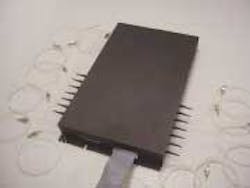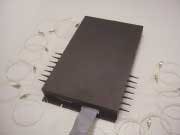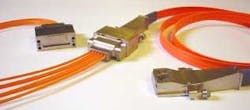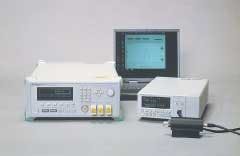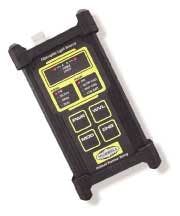Premier Products
The XL-TT10G small-form-factor 10-Gbit/sec widely tunable transponder in a 300-pin 3.5×4×0.53-inch multisource-agreement (MSA) package tunes over the entire C- or L- band with wavelength spacing of 50 or 100 GHz and supports multiple data rates, including 9.95, 10.3, 10.66, 10.7, 11.1, and 12.5 Gbits/sec. The transponder is offered with an avalanche photodiode or PIN receiver and an X or Z cut modulator (0 or -0.7 chirp). Tuning the transponder wavelength is done using the standard I2C communications link and commands or by using the three tuning control pins in the MSA connector or tuning it offline with an evaluation board and control software over eight wavelengths around the preset central wavelength.
XLight Photonics, Tel-Aviv
The CrossWave 1400 1×4 MEMS-based all-optical subsystem is a building block for transparent N×N wavelength switching nodes in long-haul, ultra-long-haul, and regional carrier networks. It integrates DWDM demultiplexing, switching, and multiplexing functions into a single device, providing wavelength granularity switching between the input and output ports. Designed to handle up to 96 wavelengths per fiber at 50-GHz channel spacing in the C-band, the switching subsystem enables a variety of wavelength-crossconnect (WXC) architectures, giving system designers a way to build highly scalable and upgradable N×N WXCs (8×8 and beyond). Also, OEMs can create a typical 4×4 WXC with only four subsystems.
Network Photonics Inc., Boulder, CO
The MPAK multifiber two-piece connector system comprises of a female connector and male jack with 6 MT-style ferrules for a total of 48, 72, or 144 optical fibers, depending on ferrule configuration. It includes rugged nickel-plated cast zinc housings that shield and isolate electromagnetic interference. Dual shutters, one each on the connector and the jack, offer dust and eye safety protection. Designed to Telcordia GR-1435-CORE requirements, the connector system comes in singlemode and multimode versions and in combination as well as card and chassis mount versions. An optional integrated device shutoff can shut down the active device when not in use, extending component life.
Johanson Fiber Optics Group LLC, Boonton, NJ
The 819xxA compact high-power tunable-laser source for testing next-generation active and broadband passive components helps component manufacturers speed development, without the need for an additional booster erbium-doped fiber amplifier (EDFA). Optical output power of 13 dBm and stimulated Brillouin scattering suppression allow high-launch powers in optical fibers, enabling testing of nonlinear effects in metro, DWDM and 40-Gbit/sec applications. The high-output power helps overcome losses in test setups or in the device under test, so engineers can test EDFAs, Raman amplifiers, semiconductor optical amplifiers, and erbium-doped waveguide amplifiers to their limits. The instrument provides wide wavelength coverage of 110 nm within the S-,C-, and L-bands.
Agilent Technologies, Palo Alto, CA
The handheld Fiber Optic Visible Fault Finder Kit provides installers/troubleshooters with a dual-laser visible light source to locate excessive bends, kinks, and breaks in fiber-optic cables. It is also suited for optimizing splices and MT-RJ prepolished connectors during field termination. The kit contains two built-in independently switchable 635-nm visible laser sources, which can be operated in continuous wave mode or modulated at 3 Hz (flashing), 500 Hz, and 2 kHz, so the unit can be used as a tracer signal generator in conjunction with fiber identifiers or optical leak detection probes. AC- or battery-powered, the kit comes with a quickly rechargeable battery as well as status indication. It also comes in a durable waterproof carrying case with a plastic laminated instruction booklet.
Hubbell Premise Wiring, Stonington, CT
